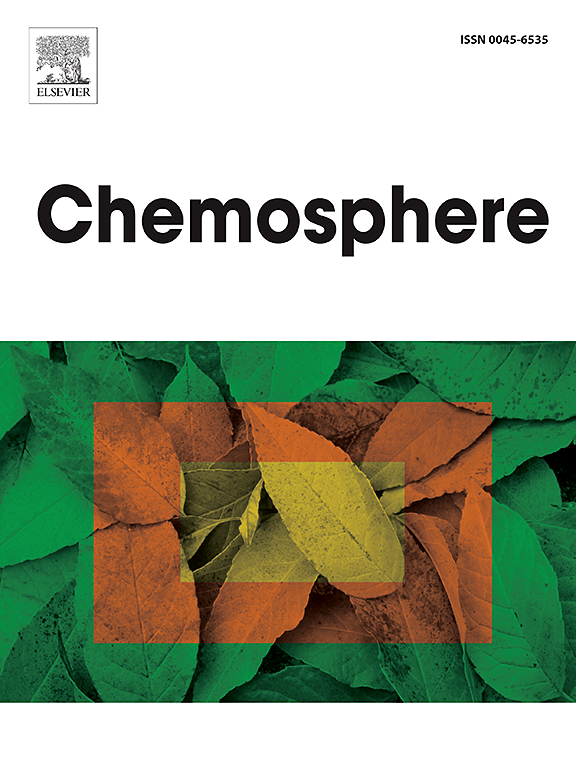硫歧化生物硫化物提高了硫自养反硝化过程中硝酸盐的去除和N2O的产生。
IF 8.1
2区 环境科学与生态学
Q1 ENVIRONMENTAL SCIENCES
引用次数: 0
摘要
硫自养反硝化(SADN)被认为是一种经济有效的硝酸盐污染水体生物修复技术。然而,硫的低生物利用度是阻碍氮去除效率的主要挑战。提出了硫自养歧化(SADP)过程,将硫转化为生物硫化物,大大增加了电子供体的可用性。在201天的实验室规模试验中,SADP工艺达到了理想的性能,其生物硫化物产量为198.87±39.8 mg S/L /d,可以为SADN工艺处理671.22±134.40 mg N/L/d的硝酸盐提供足够的电子供体。微生物群落分析证实了硫歧化菌(SDB)的存在和优势(如Desulfocaspa sp.,占整个微生物群落的8.27%),硫氧化菌(SOB)属是硫杆菌属(Thiobacillus),占整个群落的87.32%。进一步的实验表明,化学硫化物和生物硫化物的加入对SADN工艺的硝酸盐去除率分别提高了1.31和1.34倍。此外,生物硫化物被发现是最有效的一氧化二氮(N2O)缓释剂,在反硝化和反硝化过程中分别减少82%和95%的排放。结果表明,SADP和SADN一体化工艺是处理硝酸盐污染水的一种更有效和碳中性的替代方案。本文章由计算机程序翻译,如有差异,请以英文原文为准。

Biogenic sulfide by sulfur disproportionation enhances nitrate removal and reduces N2O production during sulfur autotrophic denitrification
Sulfur autotrophic denitrification (SADN) is regarded as a cost-effective bioremediation technology for nitrate-contaminated water. Nevertheless, the low bioavailability of sulfur is a major challenge that hinders nitrogen removal efficiency. A sulfur autotrophic disproportionation (SADP) process was proposed to convert sulfur to biogenic sulfide, greatly increasing the availability of electron donors. Throughout the 201-day laboratory-scale test, it was observed that the SADP process achieved desirable performance with 198.87 ± 39.8 mg S/L biogenic sulfide production per day, which could provide sufficient electron donors for the SADN process in treatment of 671.22 ± 134.40 mg N/L/d nitrate. Microbial community analysis confirmed the presence and dominancy of sulfur-disproportionating bacteria (SDB) (e.g., Desulfocaspa sp. taking up to 8.27% of the entire microbial community), while Thiobacillus was the most dominant genus of sulfur oxidizing bacteria (SOB), accounting for 87.32% of the entire community. Further experiments revealed that the addition of chemical and biogenic sulfides enhanced the nitrate removal rate of the SADN process by a factor of 1.31 and 1.34, respectively. Additionally, biogenic sulfide was found to be the most effective nitrous oxide (N2O) mitigator, reducing emission by 82% and 95% in denitrification and denitritation processes, respectively. The results demonstrated that the integrated SADP and SADN processes was a more effective and carbon-neutral alternative in treatment of nitrate-contaminated water.
求助全文
通过发布文献求助,成功后即可免费获取论文全文。
去求助
来源期刊

Chemosphere
环境科学-环境科学
CiteScore
15.80
自引率
8.00%
发文量
4975
审稿时长
3.4 months
期刊介绍:
Chemosphere, being an international multidisciplinary journal, is dedicated to publishing original communications and review articles on chemicals in the environment. The scope covers a wide range of topics, including the identification, quantification, behavior, fate, toxicology, treatment, and remediation of chemicals in the bio-, hydro-, litho-, and atmosphere, ensuring the broad dissemination of research in this field.
 求助内容:
求助内容: 应助结果提醒方式:
应助结果提醒方式:


